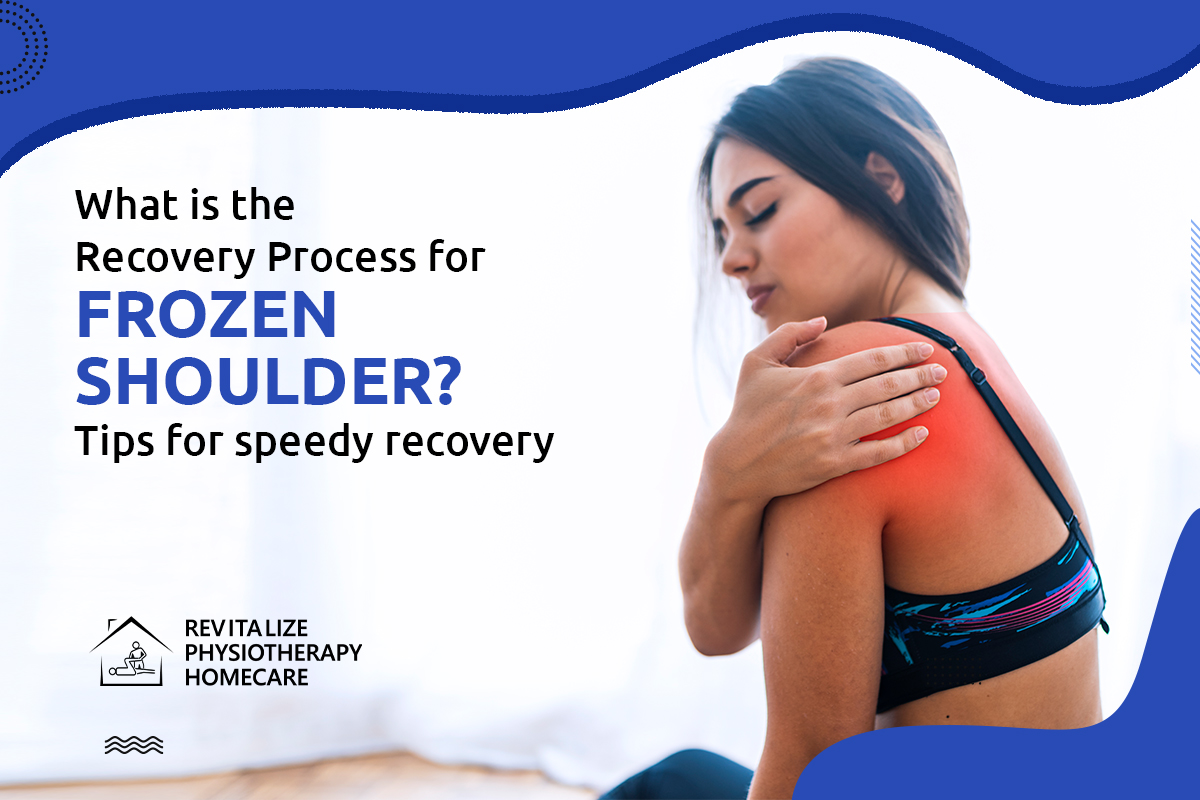What is the Recovery Process for Frozen Shoulder? Tips for speedy recovery
Frozen shoulder is a condition that causes pain and stiffness in the shoulder. It is a self-limiting condition, meaning that it will eventually go away on its own. However, the recovery process can take several months to several years.
If you have a frozen shoulder, it is important to be patient and persistent with your treatment. The recovery process can take some time, but it is important to keep moving your shoulder and doing your exercises. With time and effort, you will be able to regain full range of motion in your shoulder.
In this blog post, we will discuss the recovery process for frozen shoulders in more detail.
So, if you are struggling with a frozen shoulder, read on for more information on how to get better.
3 stages of frozen shoulder recovery process:
1. Freezing stage
The freezing stage of the frozen shoulder is the first stage of the condition. The pain may be worse at night or when you try to move your shoulder. This stage can last anywhere from 2 to 9 months.
During the freezing stage, the shoulder joint capsule becomes inflamed and thickened. This can restrict the movement of the shoulder and make it painful to move.
There are a number of things that you can do to help manage the pain and stiffness associated with the freezing stage of frozen shoulder.
These include:
Resting your shoulder:
Resting your shoulder can help to reduce pain and inflammation. You may want to wear a sling to support your arm and keep it from moving too much.
Using heat or ice:
Heat can help to relax muscles and reduce pain, while ice can help to reduce inflammation. You can even use a hot water bottle, or ice pack.
Taking over-the-counter pain medication:
Over-the-counter pain relievers, such as ibuprofen or acetaminophen, can help to reduce pain. If your pain is severe, then you must consider visiting Frozen Shoulder Treatment Clinic Brampton.
Doing gentle stretching exercises:
Gentle stretching exercises can help to improve the range of motion of your shoulder. You can do these exercises on your own or with the help of a Brampton Physiotherapist.
2. Frozen stage
The frozen stage of the frozen shoulder is the second stage of the condition. It is characterized by even more stiffness in the shoulder. The pain may lessen during this stage, but the shoulder will be very difficult to move.
During the frozen stage, the shoulder joint capsule becomes even more inflamed and thickened. This can restrict the movement of the shoulder even further and make it even more painful to move.
To help manage the pain and stiffness associated with the frozen stage of frozen shoulder, you can:
Continue with gentle stretching exercises:
Gentle stretching exercises can help to improve the range of motion of your shoulder. However, it is important to be careful not to overdo it, as this could make the pain worse.
Start more aggressive stretching exercises:
As the pain lessens, you can start to do more aggressive stretching exercises. These exercises can help to break down the scar tissue that is causing the stiffness in your shoulder.
Get physiotherapy:
Physiotherapy can help you to develop a stretching and strengthening program that is right for you.
Get corticosteroid injections:
Corticosteroid injections can help to reduce inflammation and pain. These injections are typically given by a doctor or physical therapist.
3. Thawing stage
The thawing stage is characterized by gradual improvement in the range of motion of the shoulder. The pain will continue to lessen, and the shoulder will become easier to move. This stage can last anywhere from 6 to 24 months.
During the thawing stage, the shoulder joint capsule begins to loosen up. This allows for more movement in the shoulder, and the pain starts to lessen. The shoulder may still be a bit stiff, but it will gradually improve over time.
To help speed up the recovery process during the thawing stage of frozen shoulder:
Continue with your stretching and strengthening exercises:
It is important to continue with your stretching and strengthening exercises during this stage. These exercises will help to improve the range of motion of your shoulder and strengthen the muscles around the shoulder.
Be patient:
The thawing stage can take some time, so it is important to be patient. With time and effort, you will eventually regain full range of motion in your shoulder.
Avoid activities that cause pain:
It is still important to avoid activities that cause pain during this stage. This will help to prevent the shoulder from becoming re-stiffened.
Get plenty of rest:
Resting your shoulder can help to reduce pain and inflammation.
Elevate your arm:
Elevating your arm can help to reduce swelling.
Conclusion
The entire recovery process for frozen shoulders can take anywhere from 9 to 24 months. However, most people will eventually regain full range of motion in their shoulders.
With time and patience, the frozen shoulder will eventually pass. The pain will lessen, and the shoulder will become easier to move. However, it is important to continue with your exercises and treatment plan to help speed up the recovery process.
At Revitalize, we cater customized Shoulder Pain Treatment Brampton tailored to your needs.
To get the best assistance, book an appointment at Physiotherapy Centre Brampton!




